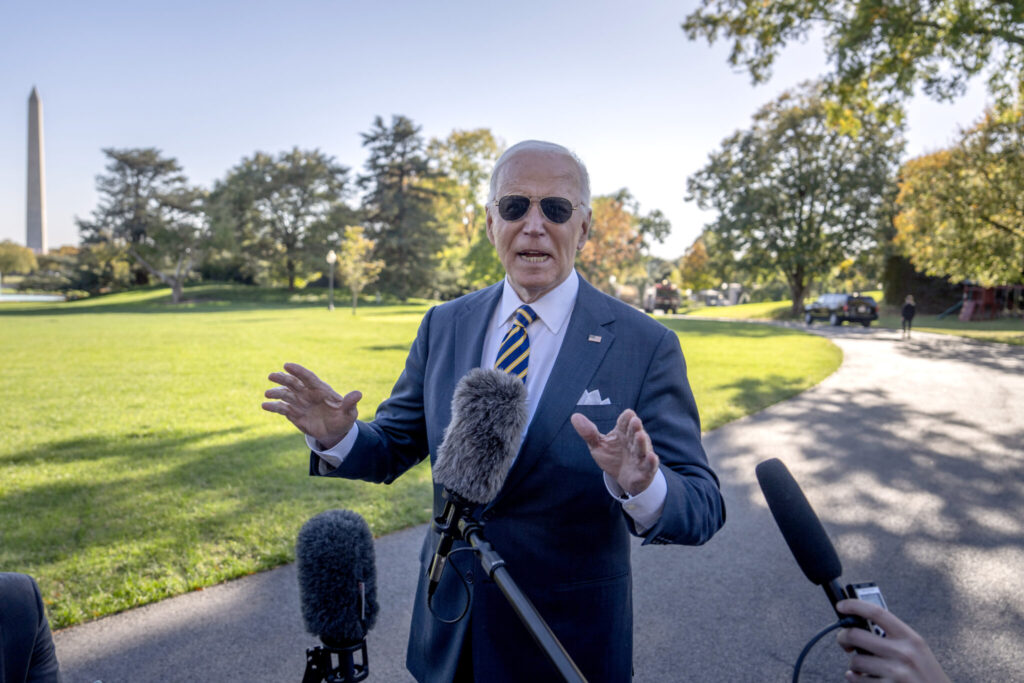Biden student loan forgiveness/ financial hardship/ Education Department/ student loan relief/ Higher Education Act/ 2024 election/ Newslooks/ WASHINGTON/ J. Mansour/ Morning Edition/ The Biden administration has introduced a new student loan forgiveness plan focused on helping borrowers facing severe financial hardship from medical bills, child care, and other expenses. This third attempt comes as previous plans faced legal setbacks, including a Supreme Court rejection and a temporary halt on another proposal. The rule, still subject to public comment and possible court challenges, could benefit about 8 million Americans.
Biden’s New Student Loan Forgiveness Proposal: Quick Looks
- Targeted aid: The new rule focuses on borrowers facing medical bills, child care, and financial hardship.
- Eligibility criteria: Borrowers likely to default, determined by income and other hardship indicators, could qualify.
- Legal challenges: Biden’s past loan forgiveness efforts faced opposition and court delays; this plan may face similar challenges.
- Timeline: The proposal will enter a 30-day comment period and, if finalized, could be implemented in 2025.
New Biden Student Loan Plan Targets Borrowers Facing Financial Hardships
Deep Look
The Biden administration announced a new student loan forgiveness proposal on Friday aimed at Americans facing severe financial hardship, a move that could relieve millions of borrowers burdened by significant debts from medical bills, child care, and other expenses. This third attempt at student loan cancellation by President Joe Biden’s administration comes as previous efforts have been met with legal obstacles, including a Supreme Court ruling against his first proposal and a recent court block on a second.
The new proposal targets borrowers who are at high risk of default due to circumstances beyond their control. Under the plan, the Education Department would proactively cancel loans for borrowers who have an 80% chance of defaulting within two years. The initiative could potentially help around 8 million Americans who are unlikely to repay their loans under current conditions.
Announced as a draft rule, the proposal now enters a 30-day public comment period. While it faces an uncertain future, including potential legal challenges, the administration aims to finalize the rule in 2025. However, its path forward is complicated by the upcoming Nov. 5 election, where Vice President Kamala Harris, the Democratic presidential nominee, has yet to outline her specific student debt relief plans, and Republican nominee Donald Trump has already denounced Biden’s cancellation efforts as unfair and illegal.
For those who qualify, the new rule considers a range of hardship indicators, including household income, public assistance status, total debt burden, and other factors that could signal a high likelihood of default. Eligible borrowers might include those with unexpected medical expenses, high child care costs, or financial struggles from caring for ill family members or recovering from natural disasters.
Education Secretary Miguel Cardona emphasized that the new plan addresses the long-standing difficulties of borrowers who are unlikely to repay their loans due to devastating financial hardships. “For far too long, our broken student loan system has made it too hard for borrowers experiencing heartbreaking and financially devastating hardships to access relief, and it’s not right,” Cardona said in a statement.
If finalized, the new rule would allow the Education Department to cancel loans for borrowers who meet specific hardship criteria, enabling them to apply for a review if they believe they qualify. The department’s assessment would factor in debt from sources beyond student loans to gain a more comprehensive view of a borrower’s financial situation. Additionally, officials pointed out that trying to recover defaulted loans can be costly for taxpayers, and forgiving such debts in cases of severe hardship could be a more cost-effective approach.
The Biden administration is using the authority granted by the Higher Education Act to pursue this initiative, citing powers that allow the education secretary to waive or cancel federal student debt under certain conditions. The administration also noted that other federal agencies have similar authority to forgive debts, typically weighing factors like “good conscience” and equity.
The hardship-based forgiveness rule was initially part of Biden’s second attempt at student loan cancellation, which remains stalled in Missouri due to a federal judge’s ruling. This new proposal, however, is a stand-alone plan that aims to address concerns over borrowers with little chance of repayment. Advocates of the rule argue that too many Americans are trapped under insurmountable student loan debt, unable to move forward financially because of constant repayment burdens.
Despite the setbacks, the administration has maintained efforts to provide relief through existing programs, such as forgiveness for public service workers and borrowers on income-driven repayment plans. Since taking office, the Biden administration reports that it has canceled a total of $175 billion in student loans for about 5 million borrowers through these channels.
Biden’s student loan cancellation promises have encountered fierce resistance from Republican-led states, which argue that the plans exceed executive authority and pose a fiscal burden. The Supreme Court previously struck down a plan that would have forgiven up to $20,000 in student loans for millions of Americans, following lawsuits from several GOP-led states. The most recent proposal’s future will likely depend on similar legal battles, as Republicans continue to challenge the administration’s authority on student debt relief.
With Biden’s term nearing its end, the administration’s latest proposal reflects an ongoing commitment to support borrowers facing financial hardship. Whether or not it survives the expected legal challenges, the plan adds another layer to Biden’s legacy on student debt, as he continues to address an issue that has shaped national discourse and impacted millions of American lives.







